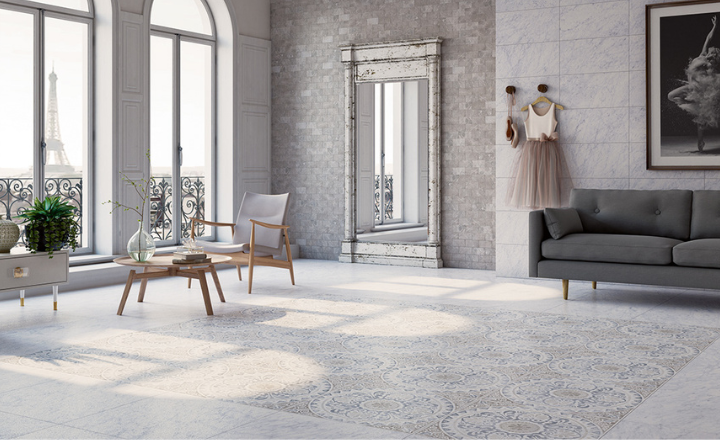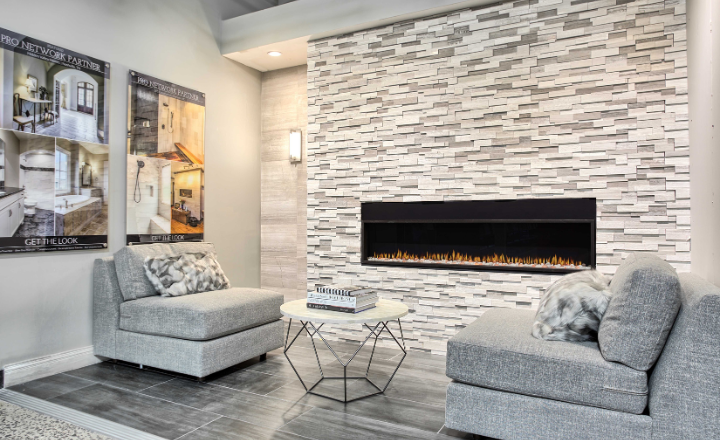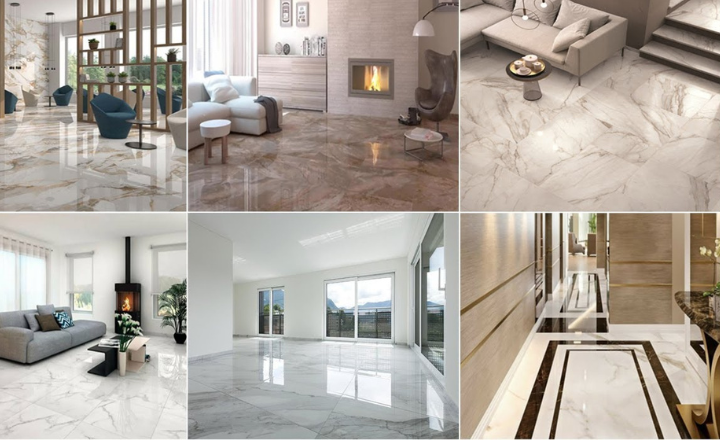Top 10 Cement Tile Designs in India 2025
With intricate patterns and vibrant colors 10 cement tile designs are increasingly becoming the favored choice for homeowners looking to make a statement. Cement tiles in India have evolved remarkably, showcasing a stunning array of designs that marry beauty and functionality.

The rich history of cement tile manufacturing lends authenticity and character to each piece, allowing individuals to reflect their style while honoring traditional craftsmanship.
The History of Cement Tiles
With their vibrant colors and intricate patterns, cement tiles trace their roots in European and Mediterranean architecture, where artisans first embraced the material for its durability and aesthetic appeal.
Originating in the 19th century, these tiles gained prominence during the Victorian Era, when they were celebrated for their functionality and ability to transform spaces into works of art. This period marked a significant evolution in tile design, as manufacturers began experimenting with bold geometric patterns and rich color palettes that captured the imagination of homeowners and designers alike.
How Cement Tiles Are Made
Making cement tiles is a traditional process that combines artistry with sustainability, making it increasingly relevant in our eco-conscious world. In this article, we’ll uncover the meticulous steps involved in tile production, highlighting why these tiles are more than just a flooring choices. Join us as we explore the fascinating world of cement tile creation and its significance in modern design.
Design Creation
The process of designing a mold can be both an art and a science. By incorporating features that help separate colors, designers can explore innovative techniques like layering or blending, leading to unique visual effects that capture attention. This approach not only elevates the overall design but also encourages experimentation with different materials and finishes.

In this way, design creation becomes a dynamic dialogue between tradition and innovation, pushing the boundaries of what tiles can represent in contemporary spaces. Embracing this philosophy allows artists and designers to produce stunning pieces that resonate with both functionality and beauty.
Pigmented Layer
The pigmented layer in cement tiles is a striking feature that elevates both aesthetic appeal and functional durability. This layer, often composed of vibrant natural pigments, allows artisans to create intricate patterns and designs that can transform any space into a work of art. Unlike conventional flooring options, the pigmented layer offers a depth of color that remains consistent throughout the tile, ensuring that even wear over time doesn’t diminish its beauty.
Base Layer
A base layer plays a crucial role in enhancing the durability and aesthetic appeal of cement tiles. When installing these beautiful, vibrant tiles, a coat of sand-cement mix serves as the foundation, ensuring that the tiles not only adhere properly but also withstand the test of time. This mixture acts as a stabilizing agent, filling in any irregularities in the substrate and providing a solid grip for the tiles above. Without this essential layer, tiles may crack or shift, undermining the integrity of your flooring.
Hydraulic Pressing
Hydraulic pressing is a transformative technique that revolutionizes the way tiles are produced. In this process, tile is compacted with high pressure through hydraulic systems, ensuring uniform density and strength. The meticulous application of pressure not only enhances the durability of the tiles but also optimizes their aesthetic qualities. This method allows manufacturers to achieve intricate designs and textures that would be challenging with traditional methods, offering a blend of functionality and artistry.
Curing
Curing is a crucial step in the tile installation process that often goes overlooked but plays a significant role in enhancing the durability of your tiles. When tiles are submerged in water, they undergo a transformative process that strengthens their bond with the adhesive and substrate.

This soaking not only ensures uniform moisture distribution but also allows the materials to expand and contract evenly, which can significantly reduce the risk of cracking or warping over time.
Drying and Finishing
Once the tiles are thoroughly cleaned and prepared, the drying and finishing stages become crucial to achieving a flawless look. Proper drying is essential, as moisture trapped beneath the surface can lead to unsightly blemishes or even mold growth. Ideally, the environment should be well-ventilated, allowing the tiles to dry completely before any further steps are taken. This attention to detail ensures that when it comes time to polish the tiles, they are in their best condition, ready to showcase their full potential.
Advantages of Cement Tiles
We Will delve into a long list of benefits these tiles bring, from their eco-friendly properties to their ability to withstand heavy foot traffic, ensuring you understand why they deserve your attention.
Aesthetic Versatility
Aesthetic versatility is a powerful tool for homeowners and designers alike, allowing them to transform spaces in ways that reflect personal style and creativity. One of the most compelling elements in achieving this versatility is the use of cement tiles manufactured in any color, pattern, or design.
These tiles enable individuals to stylize their property uniquely and imaginatively. The ability to customize cement tiles means that no two spaces need to look the same; each installation can tell a different story, echoing the tastes and aspirations of its inhabitants.
Durability
Cement tiles are renowned for their remarkable durability, making them a top choice for high-traffic areas in homes and commercial spaces alike. cement tiles endure heavy usage without losing their charm or structural integrity. Their dense composition allows them to withstand the daily hustle of kitchens, the moisture of bathrooms, and the foot traffic in hallways, ensuring they remain a practical investment for years to come.
Eco-Friendly
cement pigment tiles are emerging as a noteworthy choice for eco-conscious consumers. These tiles are produced from natural materials, making them not only aesthetically pleasing but also environmentally friendly. By opting for cement pigment tiles, homeowners can achieve vibrant colors and unique designs without relying on harmful chemicals typically found in synthetic alternatives.

This natural approach ensures that the tiles have a reduced ecological footprint, appealing to those who wish to enhance their living spaces responsibly. Moreover, the production of cement pigment tiles is not as energy-consuming as that of traditional ceramic or porcelain tiles.
Non-Slip Surface
The texture of cement tile is one of its standout features, providing a unique blend of aesthetics and functionality. cement tiles are inherently non-slippery. This makes them an ideal choice for environments where water exposure is frequent, such as bathrooms, kitchens, or even outdoor patios. Their textured surface not only enhances grip but also adds a tactile dimension to any space, inviting users to interact with the flooring rather than simply walking over it.
Longevity
Longevity in design is often measured by how well an object withstands the test of time, both aesthetically and functionally. Cement tiles exemplify this principle beautifully; their ability to effortlessly retain their beauty through years of wear and tear speaks volumes about their enduring quality. Unlike traditional materials that may fade or chip, these tiles emerge as a canvas for artistic expression, offering a myriad of colors and patterns that not only elevate a space but also tell a story of craftsmanship and resilience.
Uses for Cement Tile
Flooring
Cement tiles are rapidly gaining popularity as a versatile flooring solution that transcends traditional design boundaries. Their durability and unique aesthetic make them ideal not just for residential spaces but also for commercial environments.
Wall Cladding
One of the most striking applications is wall cladding, where these cement tiles can transform an ordinary wall into a stunning focal point. Whether used in a kitchen backsplash, in commercial settings such as cafes and boutiques, or as a statement wall in a living room, cement tiles bring texture, color, and intricate patterns that elevate the overall aesthetic of any interior.
Kitchen Backsplashes
One of the most popular uses is for kitchen backsplashes, where these tiles bring both artistry and durability to an essential area. The unique patterns and colors available in cement tile allow homeowners to express their style, turning an often-overlooked part of the kitchen into a striking focal point.
Outdoor Spaces
Cement tile is rapidly becoming a favored choice for outdoor spaces, transforming courtyards and patios into visually stunning retreats. The vibrant patterns and colors available in cement tiles allow homeowners to express their unique style while enhancing the aesthetic appeal of their outdoor environments.

Beyond their visual charm, these tiles offer exceptional slip resistance, making them an ideal choice for areas that may be exposed to moisture or rain. This feature not only ensures safety but also adds an element of confidence when entertaining guests or enjoying family gatherings.
Bathrooms
Cement tile is not just a practical choice for flooring; it serves as a stunning decorative piece that can elevate the aesthetic of any space, particularly in bathrooms. The intricate patterns and vibrant colors available allow homeowners to express their unique style while maintaining functionality. When used in wet areas, such as around bathtubs or sinks, cement tile offers both beauty and safety. Its non-slippery properties ensure that these water-prone portions remain safe for daily use, making it a wise choice for families with children or elderly members.
Most Popular Cement Tile Designs
This article will explore the most popular cement tile designs that not only elevate your space but also provide durability and character. By the end, you’ll be equipped with inspiration and insights to make an informed choice for your next renovation project.
Geometric Patterns
Cement tile designs featuring geometric patterns effortlessly bridge the gap between modernism and traditionalism, making them a favorite choice for contemporary and classic spaces alike. These tiles showcase intricate shapes and bold colors that can transform a simple room into a striking visual masterpiece. The beauty of geometric patterns lies in their versatility; whether arranged in an unexpected mix, they create dynamic focal points that draw the eye and spark conversation.
Floral Motifs
Floral motifs in cement tile designs are a vibrant expression of personality, serving as a temperament marker that reflects the homeowner’s unique style. These intricate patterns often draw inspiration from nature, evoking a sense of tranquility and warmth that complements both vintage and rustic decors. Whether it’s delicate vines winding through bold blooms or large, stylized flowers that command attention, these tiles breathe life into any space, turning floors and walls into captivating works of art.
Monochromatic Tiles
Black and white cement tiles convey a timeless elegance that transcends fleeting design trends. Their stark contrast not only enhances the visual appeal of any space but also creates a canvas for creativity. Monochromatic designs, such as intricate geometric patterns or bold florals, serve as striking focal points in kitchens and bathrooms, effortlessly elevating the overall aesthetic.
Moroccan-Inspired Designs

Moroccan-inspired cement tile designs are celebrated for their sophisticated patterns and colors, making them a favored choice among homeowners and designers alike. These tiles often feature intricate geometric shapes and vibrant hues that evoke the rich artistry of North African culture. From bold, star-shaped motifs to delicate floral designs, each tile tells a story, adding an exotic beauty to any region—whether it be a cozy kitchen or a sprawling patio.
Custom Designs
One of the most exciting aspects of these tiles is the ability to customize designs, allowing homeowners and designers alike to implement their specific visions. Many suppliers now offer personalization services, enabling clients to create unique patterns that reflect individual tastes or harmonize with existing decor. This trend has turned cement tiles into a canvas for artistic expression, making them ideal for both modern and traditional spaces.
How To Maintain Cement Tiles
In this article, we will explore essential tips and techniques for maintaining cement tiles, ensuring they remain vibrant and durable.
Sealing: To maintain the beauty and longevity of your cement tiles, regular sealing is crucial. This process creates a protective barrier against stains and moisture, helping to preserve the vibrant colors and intricate patterns that define these tiles. Opt for a high-quality penetrating sealer specifically designed for cement surfaces; applying it every 6 to 12 months can significantly extend the life of your tiles.
The effectiveness of sealing depends on thorough cleaning before application, ensuring that dirt and grime don’t interfere with the protective layer.

Regular Cleaning: Maintaining cement tiles is crucial for preserving their beauty and longevity. One of the most effective ways to ensure your tiles remain vibrant is through regular cleaning. Incorporating this routine into your weekly cleaning schedule will help prevent dirt buildup, which can dull the appearance of your tiles.use soap and water for cement tile cleaning. Don’t use chemicals.
Re-Sealing: One of the most crucial steps in this process is re-sealing, which should be done every 1-3 years depending on the foot traffic and exposure to moisture. This protective layer not only enhances the tile’s color and finish but also prevents stains from penetrating the porous surface. When re-sealing, opt for a high-quality sealant specifically designed for cement tiles to ensure maximum protection without compromising their natural aesthetic.
Avoid Abrasive Tools: One of the most crucial steps is to avoid abrasive tools during cleaning, as they can scratch and dull the surface of cement tiles. Instead, opt for soft cloths or sponges paired with pH-neutral cleaners to gently lift dirt without damaging the tiles’ intricate designs. Regular sweeping or vacuuming is also essential, as it prevents grit from accumulating and causing wear over time.
Immediate Spill Cleanup: Maintaining cement tiles is not just about keeping them clean; it’s about preserving their unique character and longevity. One of the most crucial steps in this process is immediate spill cleanup. Unlike other flooring materials, cement tiles are porous, which means they can absorb liquids quickly, leading to potential stains and damage A simple cloth and mild soap can work wonders, ensuring that your tiles remain as striking as the day they were installed.
Cement Tiles Costing
Cement tiles, known for their durability and aesthetic appeal, can vary significantly in cost based on several factors. The price largely depends on size, design, and brand, with options in India typically ranging from ₳150 to ₳500 per square foot. This cost bracket places cement tiles at a competitive advantage compared to traditional ceramic tiles, which may offer less design flexibility and uniqueness.
Cement Tiles Amongst Other Tiles
1: Cement Tiles And Ceramic Tiles
- Durability: ceramic tiles, can chip and crack under heavy impact, cement tiles are inherently stronger due to their dense composition. They are more durable and long-lasting.
- Design: Cement tiles have customized and complex designs as compared to ceramic tiles.
- Maintenance: cement tiles often require a bit more attention than their ceramic counterparts. Ceramic tiles are easy to maintain.
2: Cement Tiles And Porcelain Tiles
- Cost: the cost of cement tiles can be higher than porcelain due to the labor-intensive manufacturing process and the need for sealing to protect against stains.
- Aesthetic: Cement tiles are handcrafted and vibrantly colored, while porcelain tiles use natural materials, such as wood or stone. Cement tiles are ideal for creating bold statement floors or accent walls, while porcelain tiles excel in high-traffic areas
- Cement tiles: Cement tiles, with their artisanal charm and vibrant patterns, offer a unique aesthetic as compared to others.

3: Cement Tiles And Natural Stone Tiles
- Cement tiles have an eco-friendly nature than natural stone tiles.
- Weight: The weight of cement tiles is notably lighter compared to natural stone tiles, making them easier to handle and install.
- Natural stone tiles: natural stone tiles are typically pricier due to the labor-intensive quarrying and finishing processes involved.
Why Choose Cement Tiles?
Cement tiles are not just a flooring option; they are a canvas for creativity and expression. Each tile is handcrafted, allowing for unique designs that can transform any space into a work of art. With an endless array of colors, patterns, and textures, cement tiles enable homeowners to reflect their style while adding character to their interiors. This versatility makes them an excellent choice for both modern and traditional settings.
Conclusion
In conclusion, the top 10 cement tile designs in India for 2025 showcase a perfect blend of traditional craftsmanship and modern aesthetics. From vibrant patterns to subtle textures, these tiles offer a versatile solution for various interior and exterior spaces. As homeowners and designers increasingly seek unique flooring options, cement tiles stand out for their durability and artistic appeal. The trends we’ve explored not only reflect current preferences but also hint at the future of design in Indian homes. Explore these designs today and let your creativity shine.
FAQs
1. What are cement tiles?
Cement tiles, also known as encaustic tiles, are handmade tiles made from a mixture of cement, sand, and natural pigments, known for their durability and intricate designs.
2. Why should I choose cement tiles for my home?
Cement tiles are eco-friendly, highly durable, and come in a variety of unique patterns and colors, making them perfect for adding character to any space.
3. How do I maintain cement tiles?
Regular sweeping and mopping with a pH-neutral cleaner will keep your cement tiles looking great. Sealing the tiles periodically can also enhance their longevity and resistance to stains.
4. Can I use cement tiles outdoors?
Yes, cement tiles are suitable for outdoor use due to their durability and resistance to weather conditions, provided they are properly sealed.
5. Are cement tiles more expensive than ceramic tiles?
While the initial cost of cement tiles can be higher due to the craftsmanship involved, their longevity and unique designs often justify the investment compared to ceramic tiles.
6. What are the latest design trends for cement tiles in 2025?
In 2025, trending designs include bold geometric patterns, vibrant colors, and vintage motifs that blend traditional aesthetics with modern flair.
7. Can cement tiles be used in wet areas like bathrooms?
Yes, cement tiles can be used in wet areas, but it’s crucial to ensure they are properly sealed to prevent moisture absorption and staining.
8. Where can I buy high-quality cement tiles in India?
High-quality cement tiles can be purchased from specialized tile retailers, artisan workshops, or online marketplaces that focus on handmade and sustainable products.







